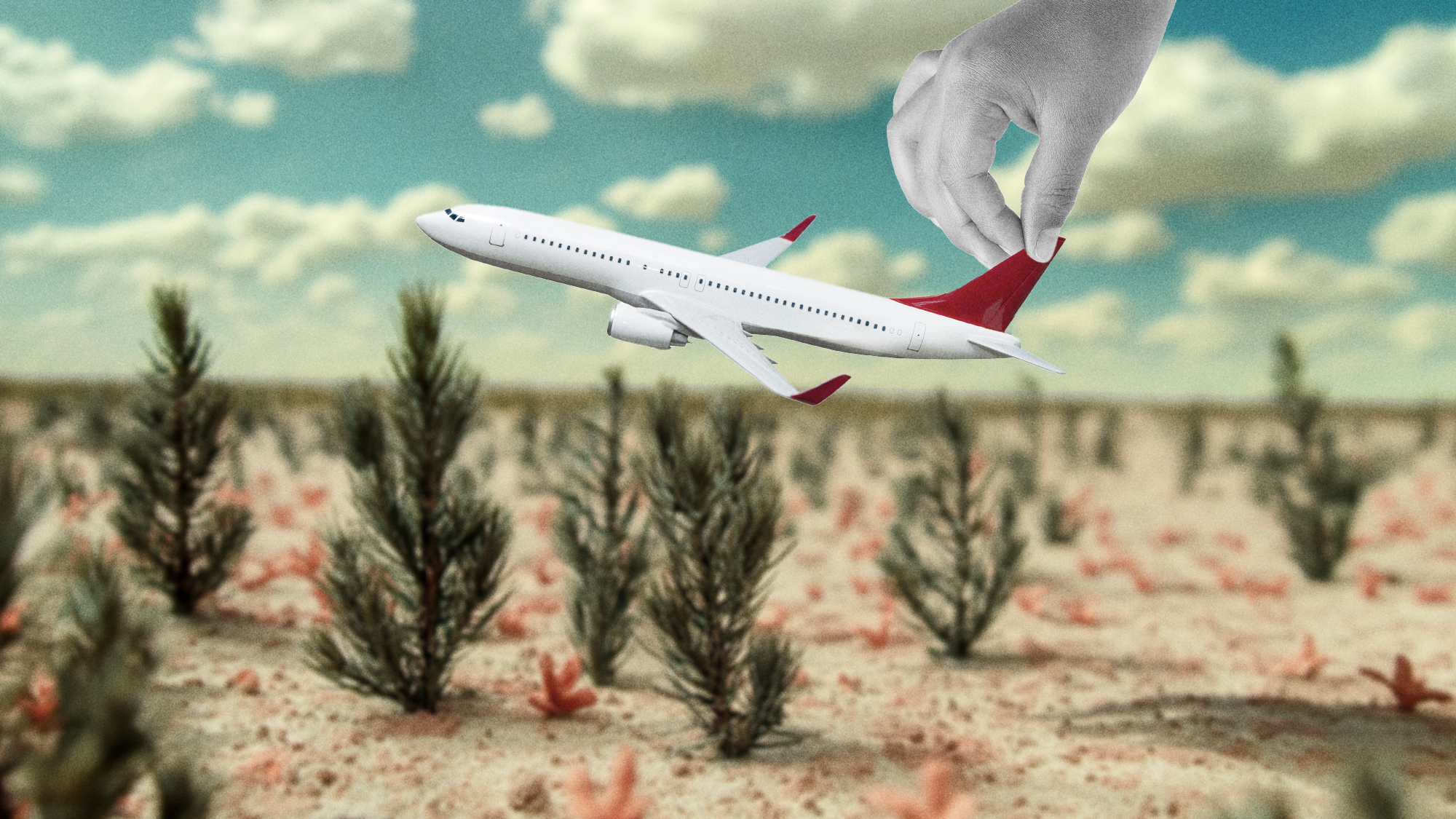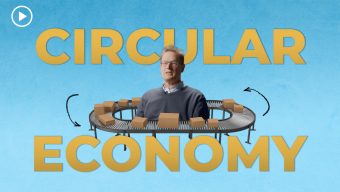The aviation industry finds itself at a critical juncture. There is a seemingly ever-increasing demand for air travel –global air traffic passenger demand was up 36% in 2023 and expected to grow by 12% in 2024 – and also an urgent need to reduce the industry’s environmental impact. While traditionally viewed mostly as a means of connectivity, the aviation sector also has the potential to be a powerful tool for social progress and economic growth, while simultaneously pioneering technology for climate action. This vision, based on the 1987 Our Common Future Report, reimagines aviation’s role in shaping a more sustainable future.
In terms of infrastructure, the aviation industry is highly concentrated. Most records account for more than 40,000 airports existing in the world (with the United States claiming the highest number of them), and according to Airport Council International, the top 20 airports in the world represent 16% of global traffic (1.41 billion passengers). This means there is a growing global demand for more hubs, particularly in emerging markets. China, for example, set the goal of reaching 400 operating airports by 2035.
Since the Covid-19 pandemic, the structure and approach to sustainable aviation has rightly come under scrutiny. What has been revealed is a fragmented system that lacks well-defined global frameworks, clear linkages between policy and national directives, and a common space to support performance dialogue between stakeholders. This gap highlights the need for a comprehensive framework – a Sustainable Aviation Management System (SAMS) – to establish a shared vision, align diverse stakeholders, define processes along the value chain, and ensure a measurable impact, all in the common pursuit of a more sustainable aviation industry.
The history of aviation is an epic tale of bravery and human ingenuity, from the first rudimentary flying devices to the technological marvels that cross the skies today. But this rapid progress has come at a cost to the environment. The industry now faces immense pressure to reduce its footprint while at the same time recognizing its immense potential to uplift society. This challenge lies at the heart of the sector’s future: how to deal with the increasing demand for growth while addressing the triple planetary crisis of climate change, air pollution, and biodiversity loss – while attending to economic growth and social development.
One of the significant hurdles in this endeavor is the lack of cohesive collaboration among various stakeholders. Aircraft manufacturers and their supply chains, airlines, governments, energy companies, regulatory institutions, and even emerging technopreneurs all play unique, crucial, and often disconnected roles in the industry. The absence of a unifying framework has led to a misaligned approach, where policies overlap, creating inefficiencies and additional costs. For example, regulations like the European Union Emissions Trading System (EU ETS) and the Carbon Offsetting and Reduction Scheme for International Aviation (CORSIA) impose double costs on airlines operating within the European Economic Area, from those countries that have a dual commitment to both regulations.
To address this issue, I interviewed industry experts, government representatives, and environmental advocates and what became clear is that the sector not only needs a regulatory overhaul but a cultural shift – one that embraces sustainability as a core value and not simply an obligation. The key takeaway of these interviews was to understand that individuals don’t resist change per se. People – the stakeholders in the end – are willing to change when it’s a known good thing. Human beings resist changes that imply losses or potential losses. It’s important to anticipate the sources of resistance to change. As mentioned by the Mayor of Cordoba during the interviews, the impact of the aviation industry on cities is so positive that we need to find solutions and overcome the difficulties to make it a reality and promote regional cities.
The path to sustainable aviation lies in envisioning a future that includes this balance of growth with responsibility to the planet. The roadmap must focus on positive outcomes while addressing the underlying causes of negative impacts. Several key areas for innovation emerge:
- Regulatory Reformation: A collaborative approach to regulation is essential, with clearer agreements on global carbon offsetting and environmental standards. A unified framework will help minimize duplicative regulations and facilitate a more efficient path to sustainability, without creating competitive disadvantages.
- Advances in Power Plants: The aviation industry’s reliance on fossil fuels significantly contributes to its carbon footprint. Transitioning to electric, hydrogen-powered, and biofuel-compatible engines will pave the way for greener aviation. For example, the International Air Transport Association (IATA) set a goal for 10% of global jet aviation fuel to be Sustainable Aviation Fuels (SAF) by 2030. SAFs can be used now, in existing engines, while the industry seeks a more long-term solution. Additionally, electric and hybrid aircraft could soon transform regional travel and short-haul aviation. It is crucial that developing countries are not left behind as these new solutions emerge.
- Design Evolution: Lightweight materials, circular lifecycle management, and fuel-efficient designs will play a critical role in reducing emissions. These advancements go beyond new technology, requiring a fundamental rethink about how aircraft are built and operated. Collaboration with startups and innovation hubs will be key to driving change.
- Emerging Business Models: Innovations like Urban Air Mobility (UAM) and regional air transport systems can improve connectivity while offering eco-friendly alternatives to traditional travel. New business needs and players are emerging, and the rules are about to change. For example, air taxis – which can take off and land vertically – may soon be available for commercial use.
- Cultural and Leadership Shift: A transformation in how air travel is perceived is necessary. Passengers, airlines, and governments must prioritize sustainable travel options and demand accountability from the industry. Policies that influence not just the frequency of flights, but also their purpose and destinations, will reshape the narrative of sustainable aviation practices.
To address the complex challenges facing the aviation industry, I propose the Sustainable Aviation Management System (SAMS) as a unifying framework. This system would aim to align stakeholders with the broader goals of sustainability, measuring the industry’s impact across fourteen indicators linked to the United Nations Sustainable Development Goals. These indicators would encompass a wide range of areas, from climate action to social and economic development.
The SAMS framework could provide a platform for meaningful dialogue, enabling stakeholders to share best practices, address challenges, and align their efforts toward common goals. By making sustainability a collective endeavor, the aviation industry has the potential to not only reduce its environmental impact but also uplift communities and drive economic progress for society as a whole.
Looking ahead, there is reason to be optimistic that the aviation industry can meet the demands of a sustainable future. However, this transformation will require more than technological innovation alone. It calls for a shared commitment to ethical leadership, social equity, and environmental stewardship across the entire sector. The aviation industry, with its vast influence and reach, has the potential to be a powerful force for change, bringing communities together and improving them while driving progress on a global scale.
Aviation has always been at the forefront of human achievement, a source of wonder and inspiration. It is now time for the industry to take the lead once again and push towards sustainability – it will not be an easy path, but it is a necessary one. By embracing this challenge, we can ensure the wonder of flight continues to connect people for generations to come while playing an important role in addressing some of the key environmental crises of our time.
© IE Insights.











